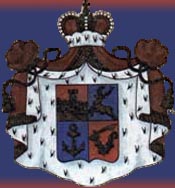
The Caucasus
The Caucasus, the mountain chain between the Caspian and Black Seas from the North West to the South East, is approximately 650 miles long. The height of the chain ranges from 10,000 feet to sea level. The Caucasus also refers to the region located between the continents of Europe and Asia which is often called Caucasia or Eurasia. In the 1800’s, the Northern Caucasus consisted of several Georgia provinces under Russian rule. Farther South lay Persia and to the Southwest, Turkey. The West was inhabited by local tribes referred to as the Circassians (Ossetians, Karbardáns and Tartars) and the East was populated by Chechnyans and Daghestanis. The mountains are often thought as the dividing line between Europe and Asia.
During the early 1800’s, Russia attempted to expand into Ottoman and Persian territories. After the Russian Turkish war of 1804-1813, a decade of peace followed. However, in 1828, war broke out at the fortress of Kars, between Turkey and Russia. The Russians emerged victorious. The Kars conquest was followed by a battle at Akhaltsikh. The Russians once again defeated the Turks and as a consequence the city of Akhaltsikh was added to Russia’s territory, first as a part of Kutaisi, then as a part of Tbilisi governorate.
Throughout most of the 19th Century, as a result of territorial disputes, the Russians challenged the Eastern Caucasian tribes. Continuous conflicts between the Russians and the Daghestanis and Chechnyans occurred. Although contact between Russia and the Caucasus can be traced to centuries before, the struggle for possession of the Caucasus with the Eastern tribes in the 19th Century lasted for a period of 60 years.
The Eastern tribes embarked on what to become known as the Murid War, a war inspired by Islam’s religious revival and the heroic struggle for freedom from Russian influence. The first leader of the Murids, Kazi Moulla, was born in 1793 in Ghimree Daghestan. In the defense of Himri, the chief trading center of arms for the Caucasus, Kazi Mollah lost his life. A younger childhood companion, called Shamil, who embraced Muridism first as a path to spiritual enlightenment and second as a means of liberation from Russia, continued Moulla’s struggle.
Shamil became the leader of armed men often referred to as "mountaineers" and proceeded to defeat the Russians in several battles. Both the Russians and Eastern Caucasians menaced and attacked one another until Shamil’s surrender in 1859.
Today, the Caucasus is comprised of post-Soviet states of Georgia, Armenia, Azerbaijan; the Russian divisions of Krasnodar Krai, Stavropol Krai, and the autonomous Republics of Adygea, Kaimykia, Karachey-Cherkessia, Kabardino-Balkeria, North Osseria, Ingushetia, Chechnya, and Dagestan. Three territories claim independence including Abkhazia, and South Ossetia, located in Georgia, and Nagormo Kakabakh, located in Azerbaijan. The Caucasus is one of the most ethnically, linguistically, geologically, and culturally diverse regions in the world and an area of great ecological interest and importance.
Source bibliograrphy:
- Itonishvili, Vakhtang. Kavkasia da Kavkasielebi [Caucasia and Caucasians]. Tbilisi: Ist. da Ethnol., religiis shest.da propagandis camecniero centri, 2007.
- Kopaliani, Emil. Kvitciani, John. Kavkasia XX saukuneshi [ Caucasia in XX Century]. Tbilisi: Tbilisis universitetis gemomvemloba, 2001.
- Urushadze, Levan. Z. Saqartvelo da Kavkasia evropul tskharoebshi [Georgia and Caucasia in European sources]. Tbilisi: Tbilisis universitetis gemomvemloba, 2004.
[ TOP ]
